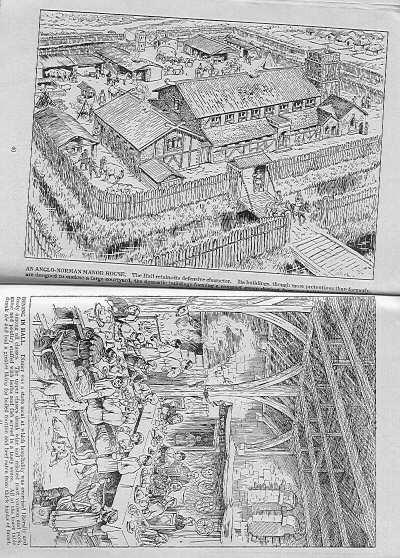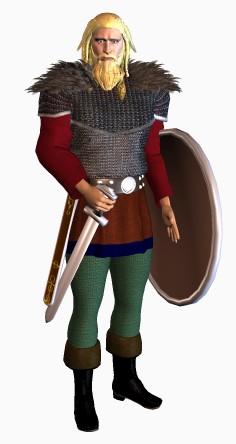Leaderboard
Popular Content
Showing content with the highest reputation on 2022-09-03 in all areas
-
4 points
-
2 points
-
The Germans Cimbri, Suebians, Goths https://github.com/JustusAvramenko/delenda_est/commit/74653b71376ba38593f675e4051586769292b59b https://github.com/JustusAvramenko/delenda_est Need halp from our resident historians, artists, and reference gatherers. Units Since the Suebi were a tribal confederation, units will have tribal designations, for example: Marcomanni Spearman, Quadi Light Cavalry, etc. Goths will represent the "later" Germans, with round shields, more helmets, more chain mail, greater cavalry. Suebian units look like "early" Germans, with hexagonal shields, fewer helmets, less chain mail, greater reliance on infantry. Basic units - Bare chested or Animal hide. Pants. Shield. Weapon. No helmet. Advanced units - Shirt. Pants. Shield. Weapon. No helmet. Elite units - Shirt. Pants. Cape. Shield. Weapon. Simple Germanic helmet. Champions and Heroes - Heavy body armor. Germanic helmet. Suebian Heroes Ariovistus Leader of the Suebi and other allied Germanic peoples in the second quarter of the 1st century BC. He and his followers took part in a war in Gaul, assisting the Arverni and Sequani in defeating their rivals, the Aedui. They then settled in large numbers into conquered Gallic territory, in the Alsace region. They were defeated, however, in the Battle of Vosges and driven back over the Rhine in 58 BC by Julius Caesar. https://www.wikiwand.com/en/Ariovistus Maroboduus King of the Marcomanni, who were Germanic Suebian people. He spent part of his youth in Rome, and returning, found his people under pressure from invasions by the Roman empire between the Rhine and Elbe. He led them into the forests of Bohemia, adjacent to the Quadi who already lived nearby, and established a large alliance. https://www.wikiwand.com/en/Maroboduus Ballomar Leader of the Marcomanni. At first a Roman client ruler; during the first Marcomannic War he formed an alliance with other Germanic tribes and invaded Italy. https://www.wikiwand.com/en/Ballomar Arminius Was a Roman officer and later chieftain of the Germanic Cherusci tribe who is best known for commanding an alliance of Germanic tribes at the Battle of the Teutoburg Forest in 9 AD, in which three Roman legions under the command of general Publius Quinctilius Varus were destroyed. His victory at Teutoburg Forest would precipitate the Roman Empire's permanent strategic withdrawal from Magna Germania. https://www.wikiwand.com/en/Arminius Found in the Mercenary Camp. Goth Heroes Alaric I History Wiki Link Theodoric I History Wiki Link Theodoric the Great History Wiki Link Buildings All wooden, less health than "standard" civs. "Walls" are a wooden stockade, halfway in strength between palisades and stone walls. "Fortress" is wooden. Building "shapes" should roughly follow Empires Ascendant standard, but with a Germanic veneer or aesthetic. There can be some unique exceptions for visual variety however. Maybe houses are longer than they are wide with a rectangular footprint, in contrast to other civs whose houses generally fit a square footprint. Suebians Rally Point Flag General Look References Civic Center House Storehouse Farmstead/Corral (combined building) Dock Market Temple Glory Statue Forge (aka "Blacksmith") Defense Tower Barracks Stable Archery Range Great Hall (Special Building) Siege Workshop Fortress Town Walls Wonder Goths Civic Center House Storehouse Farmstead/Granary Dock Temple Glory Statue Forge (aka "Blacksmith") Defense Tower Barracks Stable Archery Range Siege Workshop Fortress Town Walls Wonder Gameplay Suebians still use standard territorial gameplay, but have an ox cart dropsite. Later Goths will have more of a nomadic gameplay (like Huns or Scythians) with no territory. It would be interesting if Hyrule:Conquest's hero selection UI could be used to "split" the Goths into Visigoths and Ostrogoths. Art Needed Each one needs its own civ emblem. Unit head models with the "Suebian Knot" and beards for the Suebian units. New unit body and shield textures. Some new helmet models. New building art set.1 point
-
An appimage for 0.0.26-alpha is available An appimage for 0.0.26-alpha (RC3-27067) release is available 0ad-0.0.26-rc3-27067-alpha AppImage An appimage for the 0.0.25b-alpha release is available at 0ad-0.0.25b-alpha appimage I've moved the how-to guide to the Wiki: https://trac.wildfiregames.com/wiki/BuildAndDeploymentEnvironment#LinuxAppImage1 point
-
We cannot change any templates strings any more nor any user facing strings (today was an exception) else translators won't have time to finish for the september release. We are already six months late which means lower morale and motivation so I will not make it longer.1 point
-
https://trac.wildfiregames.com/wiki/Audio_Voice_List Action – English order_build – I will build. order_walk - I will walk. order_repair - I will repair. order_attack - I will attack! I will go out against them! I will march! I will retreat! Battle cry. order_gather - I will gather. I will fish. I will hunt. I will work land. I will herd. order_guard - I will guard. order_garrison - I will garrison. order_patrol - I will patrol. order_trade - I will trade. order_heal - I will heal. select – What is it? My lord? This is the list. I dubbed the Chinese voice based on the content of the English voice.1 point
-
It looks ok. That's strange why the text is encrypted. Seems like XMessage reinterprets it as Unicode or vice versa. Yes, it's solved in r27067 and in the upcoming release as well.1 point
-
1 point
-
This is also the reason why I emphasized keeping the swordsman before, because in the battle, the Chinese are accustomed to let the soldiers with swords stand in the first row with their shields, and the soldiers with spears and halberds stand behind the swordsmen. If the swordsmen were removed, the Han army would have no soldiers with shields.1 point
-
1 point
-
Ok great! All the more reason so I can add wildlife to the maps either through contributions or mods, because I already am almost finished making a South China Tiger that Lion.Kanzen requested with pics of other South China animals, so yeah, I am enjoying making South Chinese wildlife indigenous to the area, if there is a list of specific animals for South China, I can contribute considering the fact I am working on a bunch of different species, but be sure to let me know if you guys have any specific animals you would like contributions of because I am more than happy to contribute.1 point
-
1 point
-
https://en.m.wikipedia.org/wiki/Palaeoloxodon_namadicus also some extinct species. some elephants are a mystery.I do not know until what period they lived or it is not completely certain. this one survived until 3000 years ago, but who knows. https://nationalzoo.si.edu/animals/asian-elephant Not all elephants develop visible tusks. In Asian elephants, only some males have large, prominent tusks. Most female and some male Asian elephants have small tusks, called tushes, which seldom protrude more than an inch or two from the lip line. Elephas maximus rubridens. The Chinese elephant, also called the pink tusked elephant (Elephas maximus rubridens), is one of the two extinct subspecies of the Asian elephant. It became extinct in the 15th century A.D. It was scientifically described in 1950 by the Sri Lankan zoologist Paules Edward Pieris Deraniyagala (1900-1976). The existence of elephants in ancient China is attested both by archaeological evidence and by depictions in Chinese artwork. Long thought to belong to an extinct subspecies of the Asian elephant named Elephas maximus rubridens, they lived in Central and Southern China before the 14th century BC. They once occurred as far north as Anyang, Henan in Northern China.[1] The elephant is mentioned in the earliest received texts, including the Shijing, Liji, and Zuozhuan.[2] The oracle bone script and bronzeware script glyphs for elephant are pictographic depictions of an animal with a long trunk. Their modern descendant is the regular script character 象 (Standard Modern Chinese, xiàng)1 point
-
I just saw this, I might be able to make some South Chinese wildlife, also it would be awesome to have both Bengal and South China tigers, since the game already has India as a map region, I might be able to model some South Chinese wildlife if you have a list of animals I could make? Luckily we have Bengal Tigers for India, South China Tigers are a great subspecies to have for a South China region in the development of maps for the region. The other thing too is South China part of the regions that can be in the game already? I am more than happy to contribute animals that are needed in case the other artists are busy with different stuff.1 point
-
Maybe. But remember, women can't garrison everywhere so that would really just be to garrison all men. Garrisoning all men right now, is a pretty rare occurrence (and it is even rarer for the player who does it to survive, so this may be a feature without any real use). I would also worry about the scenario where players begin to purposely build barracks close to each other on the border, wait to be attacked and then garrison all barracks. The attacker's units would then default to capturing barracks. The garrisoned player could then engage in a series of rapid un-garrisoning and re-garrisoning that can't be stopped because the attacking player's units always default to the buildings. Basically, I would be concerned that such a feature has little value and could lead to annoying meta changes so I don't know if it is worth creating. But I could be wrong.1 point
-
https://es.m.wikipedia.org/wiki/Vermilingua Falta el Oso Hormiguero. https://www.google.com/search?hl=es&q=Oso hormiguero1 point
-
1 point
-
1 point
-
Faltaría la versión de la Panthera Onca de color negro. https://reinoanimalia.fandom.com/es/wiki/Pantera_Negra1 point
-
1 point
-
1 point
-
1 point
-
1 point
-
1 point
-
1 point
-
UPDATE: Dunno how it's going on your side, but i tried to make a public game in lobby from Laptop 16GB ram i7 and it can host the game pretty well. and joining from an alternate computer, and IT WORKS! There is some typo or something into the code, it will crash after first load, when it CRASHES just by clicking SUPRESS a pair of times game worked fine for me, crash didn't happened anymore, just some annoying red text on the debugger at the top of the screen when loading the map file... and it's working! Hello to everyone, I'm glad to introduce you to my last attempt to create a realistic battlefield inspired at the Ebre river. The city of Tortosa was named Dertosa by the Romans after they sieged and conquered Hibera, the iberian city that was placed where we can find Tortosa. This map covers this city area and it's sorroundings. Includes the roman path "La Via Augusta", the delta is not yet big as today is. And I plan keep including details I've found surfing the web. Settings are for 8 players. Right now i'm not able to set configuration in a manner teams can be arranged by host when hosting this map, it's forced to DIPLO FFA RES=300 MAX_POP 250; In case you want to do 4v4 position for members of teams should be 11112222 and once game starts, set teams in-game; starter pos are found towards the edges of map (but not in the snow). to be placed atHIBERA - HIBERUS DELTA - FFA NOMAD DIPLO & GAIA.pmpHIBERA - HIBERUS DELTA - FFA NOMAD DIPLO & GAIA.xml C:\Users\YOURWINDOWS10USERNAMEGOESHERE\Documents\My Games\0ad\mods\user\maps\scenarios\ IA looks to be able to play and win against me despite all the errors shown by the console when loading the map; I'm unable to prevent them from appearing; I'm unable to set preview for this map pointing via a preview-screenshot.png I've placed at art/textures/ui/session/icons/mappreview or (C:\Users\YOURWINDOWS10USERNAMEGOESHERE\AppData\Local\0 A.D. alpha\binaries\data\mods\public\public.zip\art\textures\ui\session\icons\mappreview) to be precise. I don't know how to enable specific pre-in-game teams arrangement, seems the way I configured the XML is forced to FFA DIPLO LAST SURVIVOR (in fact, is the option I wanted to enable, but someo people may miss the capability to do 1vs7 IA on this scenario wtihout needing to create copy of the map with different options at the XML. Feel free to try it, make suggestions, and so. TO BE UPDATED...1 point
-
"Allied View" is a game option that's been added to vanilla 0ad a26 (upcoming release). When the option is enabled, allies will basically have "cartography mode" on at the start of the game.1 point
-
An attempt at proto-germanic building names (using Wiktionary). House: Hūsą Farmstead: Hufą (Estate, farm, hall) Kurnahūsą(Granary) Field: Fuldō Civil Center: Fulkasrēdaz(Tribal Council) Corral: Hagô (enclosure, yard, pasture) Storehouse: Skattasfriþuz (shelter of riches) Outpost: Staupilaz (tower) Defense tower: Warīnīzstaupilaz (defense tower) Statue: Gudasbiliþī (God image) Market: Kaupôsmaþlą (Merchant's Gathering) Fortess: Burgz Dock:Habanō (Harbour, Haven) Wall: Wallaz Palisade: Tūną (Enclosure, Fence) Barracks: Druthislegra (War band's camp) Stable:Stallaz Temple: Hailagastadiz (Holy place) Smith: Smiþjǭ Arsenal: Wēpnasfriþuz (Weapons shelter) Great Hall: Kuningashallō (King's hall) Possible wonder: Kuningasgrabaz (King's grave), Samnungozbarwaz (Semmnones' grove), Þunrassūliz (Pillar of Þunraz), Grautazhaimaz (Great House)1 point
-
Discarded possible wonders: 0.a. "Externsteine": https://en.wikipedia.org/wiki/Externsteine The largest (sacred) rock formation in continental Europe. Although labeled as a sacred place for the (late coming) continental Saxons, and having inscriptions dating the X century, this place was known as a worship place for many Germanic tribes that preceded them. But considering the last choice of removing Stonehenge as a wonder for the Britons (and giving them a construction with a population bonus), then this option is unlikely. It's also too big as for being reduced it to the size of a wonder. But Externsteine along with a Black Forest (Schwarzwald), are must have maps for this faction. And it would be cool if Britons also would have a map with a real scale Stonehenge complex (whether possible to capture it or not as a wonder), along with other stone complexes like Bluehenge, Stanton Drew stone circles and even Drombeg stone circle. 0.b. "Irminsul": https://en.wikipedia.org/wiki/Irminsul Again, it's more related with continental Saxons (whom don't fit the time frame). But I have to admit, it would fit perfectly as the wonder of the Germanic tribes in that area in Millennium AD. (A (continental) "Angles-Jutes-Saxons-Frisians" faction that could actually use Anglo-Saxons houses). In case the name is too long, they could be named "Frisian-Saxons" (or "Saxon-Frisians") (the two most relevant of those tribes, also the ones more famous for their wars with Franks). (Saxon wars, Frisian-Frankish wars). And designing it would require artistic make up as well. Maybe a large pillar like this: Surrounded by smaller pillars like this one (and some trees): Actual possible wonders: 1.a. "Alemannen Langhaus": Since none of the current buildings actually represent Langhäuser of a larger size (although they were pretty common). (It could be nice to make at least the civic center as similar as possible to those houses, if this is not the final choice for the wonder). (Maybe make it even larger if possible, around the size of the Norse civic center). The term "Alemannen" wouldn't come as a reference to the museum of which I spoke before, but from the words that gave origin to their name "alle männer" ("all peoples"). (And Alemanni were also part of the Suebians, as stated in my previous comment). Maybe decorate it with some sacred poles and bulls and horses skulls? 1.b. ***** "Semnonenhain" (Semnones grove) (my personal favorite): https://en.wikipedia.org/wiki/Grove_of_Fetters https://de.wikipedia.org/wiki/Semnonenhain From a quick look on Wikipedia, Semnones were Suebians too: https://en.wikipedia.org/wiki/Semnones "The Semnones give themselves out to be the most ancient and renowned branch of the Suevi. Their antiquity is strongly attested by their religion. .... All this superstition implies the belief that from this spot the nation took its origin, that here dwells the supreme and all-ruling deity, to whom all else is subject and obedient. The fortunate lot of the Semnones strengthens this belief; a hundred cantons are in their occupation, and the vastness of their community makes them regard themselves as the head of the Suevic race." A sacred grove (common among Germanic pagans). A wonder as large as possible (and probably without the population bonus*). And clearly, a less rectangular (more "randomly shaped, Brownian distributed") wonder, representing the inner altar surrounding a big tree in the forest (it would require artistic imagination as well). But we already have an artistic representation: https://en.wikipedia.org/wiki/Grove_of_Fetters#/media/File:Semnonen_Hain_by_Emil_Doepler.jpg 1.c. "Suebischen Ganggrab" (Suebian burial mound): (I lack of information on this one, but it would indeed require a little of artistic inspiration). How to make that burial mound any different from the Xiongnu, Scythian and Illyrian burial mounds proposed as wonders for them too? From a quick search online: Denghood burial mound: https://en.wikipedia.org/wiki/Denghoog Harhoog burial mound: https://www.komoot.com/highlight/419436 (In case those aren't included as wonders, they could be modeled and added to the Suebian maps of which I spoke before). Possible special buildings: 2.a. "Kreisgrabenanlage" ('circle', 'dig', 'enclosure'), (circular ditched enclosures): https://en.wikipedia.org/wiki/Neolithic_circular_enclosures_in_Central_Europe Wooden circles (historically) used with cultic purposes. And "serving" the function of calendars. I have to admit the first time I saw these I thought they were used to train units. (So I thought of it as an special building where infantry units could upgrade their ranks, with some limitations for not OP this faction too much). But they could offer a health / temple bonus instead. And matter of fact, since these constructions are related with other Germanic and Slavic peoples, they could be a shared technology / special building. Whether for "Frisian-Saxons" and "Baltid-Slavs" in Millennium AD? (or it can be used as the Wonder for the Suebians...) https://en.wikipedia.org/wiki/Goseck_circle This simply looks gorgeous and seems to fit so naturally for Suebians: 2.b. "Batavische Kaserne" (Batavian Barracks): In case there is going to be an special technology (or building) to unlock Batavians as special champions (both infantry and cavalry). (Yes, Suebians are going to be a very infantry focused faction). Maybe another Langhaus with a different style. What about using a Treveri Langhaus? (just as a variation). (Despite of being a Celtic tribe, they were closely related and placed to Germanic peoples). https://en.wikipedia.org/wiki/Treveri Treveri Langhaus: I'm really excited to see the complete development of this and many other factions in the game1 point
-
Its structures are well developed and designed, I'm tempted to try to see them on 0ad, the cool thing about making the files available and that we can always count on the help of someone in the community.1 point
-
Wie_die_Germanen_gewohnt_haben_(CC_BY-SA_4.0).webm The farm houses in lower saxony are still very similar until today: https://en.wikipedia.org/wiki/Low_German_house Long story short, historically corrals didn't exist, they lived together with their animals. I didn't find this kind of living in any other culture, except maybe the vikings (who are also considered to be germans in the broadly sense). I think the Gauls didn't have these? Maybe someone has a better insight in other cultures? It could somehow distinguish the gauls from the germanic tribes, otherwise they'd be too similar1 point
-
Hey, As a work in progress update, there you have screenshots of the blockout phase. Many thanks to all your references and for the work @Obskiuras. Nothing better than good concept art to be efficient in modeling. It's going to be faster and faster as I'm doing a modular approach, so each building becomes easier. Once all will be done, I'll do the texture atlas to have a good feeling of the whole. Even if it's a wip you are welcome and encouraged to add your grain of salt. Like, I thing pointy palisade are better as per @Lion.Kanzen (I think?) recommendation for the great hall. And after 'finishing' the Civ Center, I'll try to make a version larger in Y (green axis) and shorter. It may be better. Of course, here the blend. in case the volcano goes off. sueban_buildings_blockout.blend1 point
-
Please consider taking into account the @Obskiuras concept designs, they look really good.1 point
-
1 point
-
1 point
-
The Lombards: The Ancient Longobards - Neil Christie The Lombards, also known as the Longobards, were a Germanic tribe whose fabled origins lay in the barbarian realm of Scandinavia. After centuries of obscurity during the long period of Roman domination in Europe, the Lombards began a concerted migration south-eastwards, coming to prominence immediately after the fall of Rome. Pushing across the Danube to occupy Hungary, the tribe emerged as a powerful protagonist in the former heartland of the Empire in the early sixth century AD. The Lombards subsequently invaded Italy in AD 568-569, where they successfully countered the Byzantines and established a kingdom based on the fertile north Italian plains. This endured for more than two centuries before its conquest by Charlemagne, and even after this defeat, a Lombard state continued to exist in southern Italy until the eleventh century. In this book, the author combines many sources, archaeological and historical, to offer a fresh and vividly detailed picture of Lombard society - its people, settlements, material and spiritual culture - and its evolution from martial 'barbarian' tribe to complex urbanized state. The Alamanni and Rome 213-496 - John F. Drinkwater The Alamanni and Rome focuses upon the end of the Roman Empire. From the third century AD, barbarians attacked and then overran the west. Some--Goths, Franks, Saxons--are well known, others less so. The latter include the Alamanni, despite the fact that their name is found in the French (''Allemagne'') and Spanish (''Alemania'') for ''Germany.'' This pioneering study, the first in English, uses new historical and archaeological findings to reconstruct the origins of the Alamanni, their settlements, their politics, and their society, and to establish the nature of their relationship with Rome. John Drinkwater discovers the cause of their modern elusiveness in their high level of dependence on the Empire. Far from being dangerous invaders, they were often the prey of emperors intent on acquiring military reputations. When much of the western Empire fell to the Franks, so did the Alamanni, without ever having produced their own ''successor kingdom.'' Edit: Варвары. Древние германцы: быт, религия, культура Малькольм ТоддВарвары. Древние германцы. Быт, религия, культура Everyday Life of the Barbarians: Goths, Franks, & Vandals От издателяАвтор этой книги попытался реконструировать социальную структуру и каждодневную жизнь варваров на основе обобщающих выводов археологов, наблюдений искусствоведов и лингвистов. Рассматривается промежуток времени от II в. до н.э., когда цивилизованные народы впервые обратили внимание на варваров, до периода Великого Переселения народов IV-VI веков н.э. Everyday Life of the Barbarians: Goths, Franks and Vandals With drawings by Eva Wilson. The "Barbarians" of the classical world - especially the Goths, Franks and Vandals - have been traditionally dismissed as savage hordes who sacked Rome and destroyed her Empire. It is only the discoveries of modern archaeology that have established a true picture of these versatile Germanic tribes who originally inhabited north-west Europe beyond the frontiers of the Roman Empire and who later penetrated every corner of Europe. Like the Celts, these tribes excelled in the arts of war - but warfare was far from being the whole of their life. They delighted in feasting, music, dancing and gaming. The tribes were organised in a rigorous social hierarchy and they practised a remarkably advanced system of agriculture. Their houses and furniture were simple but they took a particular pride in personal decoration: the surviving artifacts - especially ornamental metalwork - show a magnificent tradition of craftsmanship. Trade contacts, too, reveal a lively commerce with the Roman provinces and with their nomadic neighbours. This vivid and rounded portrait of the daily life of Rome's northern neighbours is a fascinating addition to the Publishers' Everyday Life series and a valuable complementary study to the volume on "Ancient Rome". Malcolm Todd, who is Lecturer in Archaeology at the University of Nottingham, has made use of his own research, and the illustrations - almost 100 in all - include a great deal of unfamiliar material. The Early Germans by Malcolm Todd The growing number of volumes in the "Peoples of Europe" series are generally quite useful to students of early medieval history; at less than 300 pages, they do well as surveys. This one, unfortunately, is one of the less readable efforts. Todd is interested in the Germanic tribes and their migrations from the early Roman Empire up to about 700 A.D., but he wanders from a chronological coverage of all the multitude of Germanic peoples (who never thought of themselves as "Germans" in the first place), to a topical one (chapters on economy and agriculture, social institutions, burial practices, trade and diplomacy, art and technology, etc), to a geographical survey divided into sections on Goths, Vandals, Franks, Burgundians, Gepids, Lombards, and (oddly) Scandinavians. It's a confusing book to read, with various groups appearing (naturally) in each other's chapters. Todd also mentions in passing specialized information or rival interpretations of the sources that he apparently assumes everyone knows -- which is a bad assumption in a survey of this kind. While there's useful stuff here, I would not suggest this as a first resource for someone new to the field. Instead, I would recommend the separate books in this series by James on the Franks, Heather on the Goths, and Christie on the Lombards -- and Heather's latest, _The Fall of the Roman Empire_ (2006), over all of them. Goths in the Fourth Century This volume brings together many important historical texts, the majority of them (speeches of Themistius, the Passion of St Saba, and evidence relating to the life and work of Ulfila) not previously available in English translation. "...a compact and exciting do-it-yourself kit for the student of Gothic history... outstanding."—Bryn Mawr Classical Review1 point
-
The time frame involved is basically from Ariovistus (58 BC) to Hermeric (441 AD) ? Focusing on the Suebian tribes ?1 point
-
Let me fetch some of the old references from the art repository, not the art_source one, of which you have access I believe. I guess @Genava55 and @Germanic_celt79 could be of assistance. Maybe @Juli51 wants to do some concept art @Andrettin EDIT: Here you go. Props Units Buildings Edit: relevant threads Voices1 point


.thumb.png.ce58cea22940c255f5b0a735d5abee36.png)












.jpeg.1ee5442c4542e25444dd3b4aa84f15f0.jpeg)
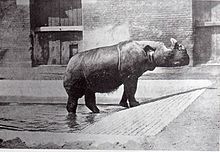










.jpg.8225182af86e53801227fb42220dca77.jpg)





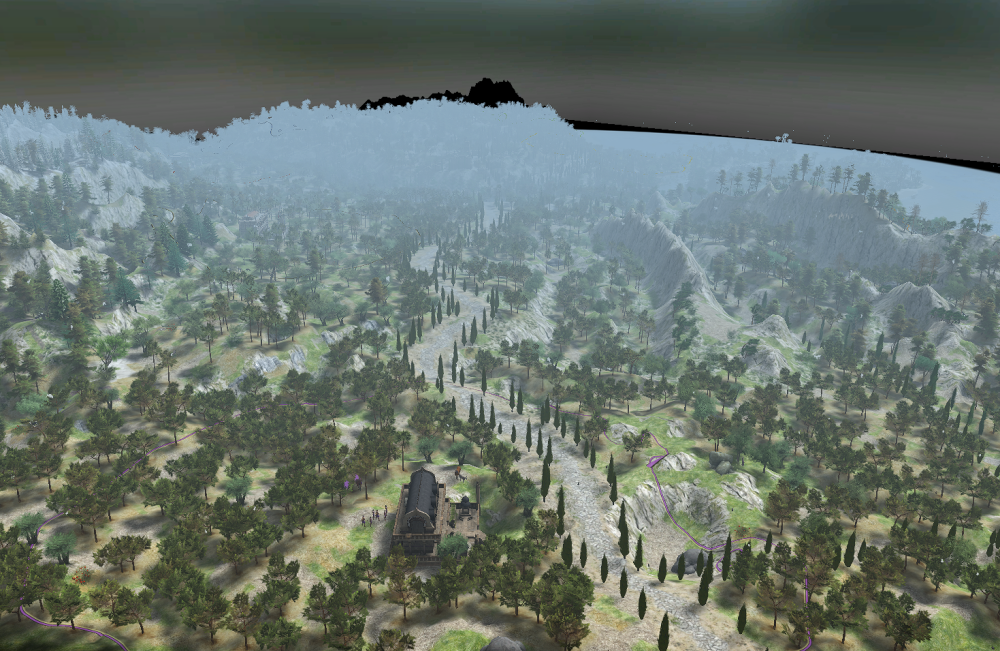













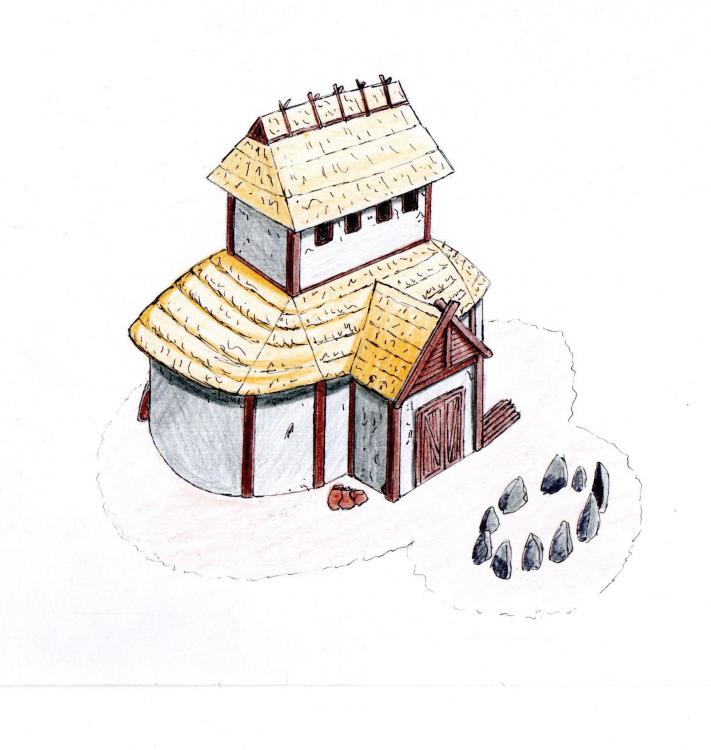
.thumb.jpg.b21ca1d0c15fb56b42c39b25a0a40815.jpg)











